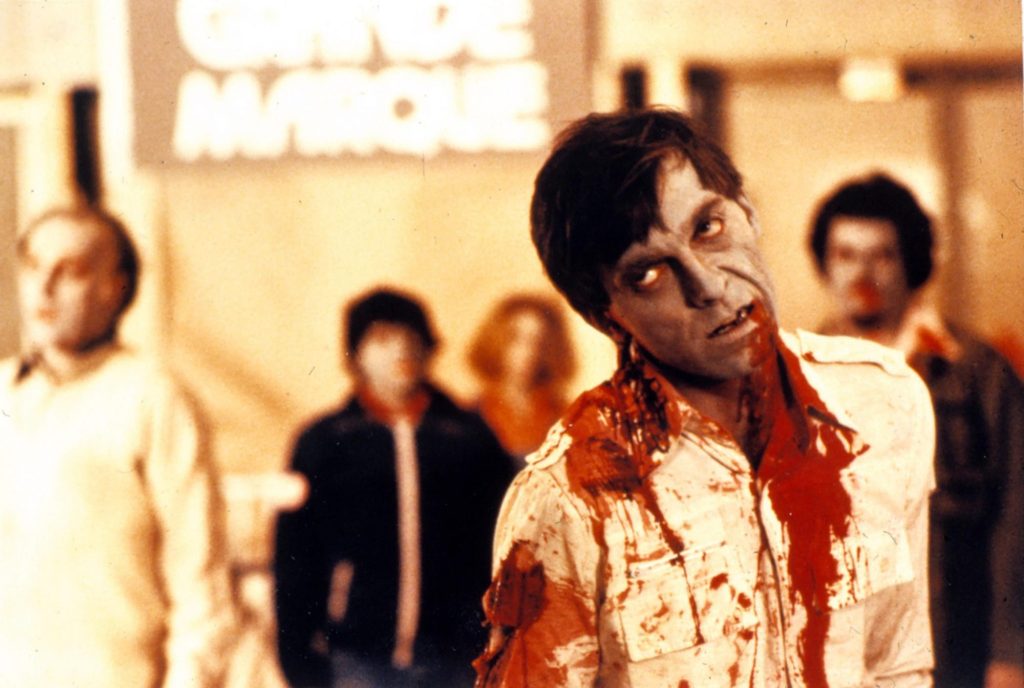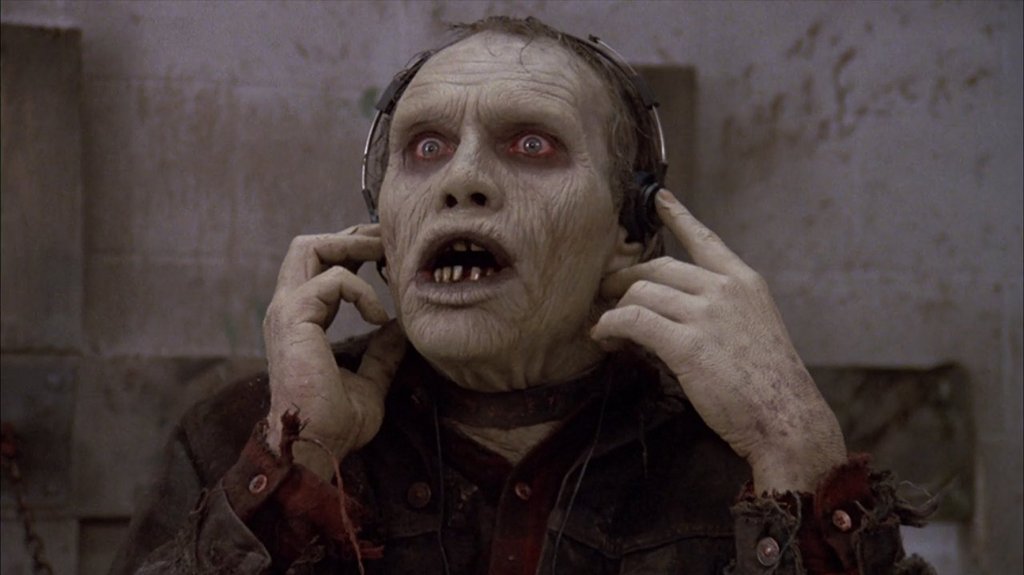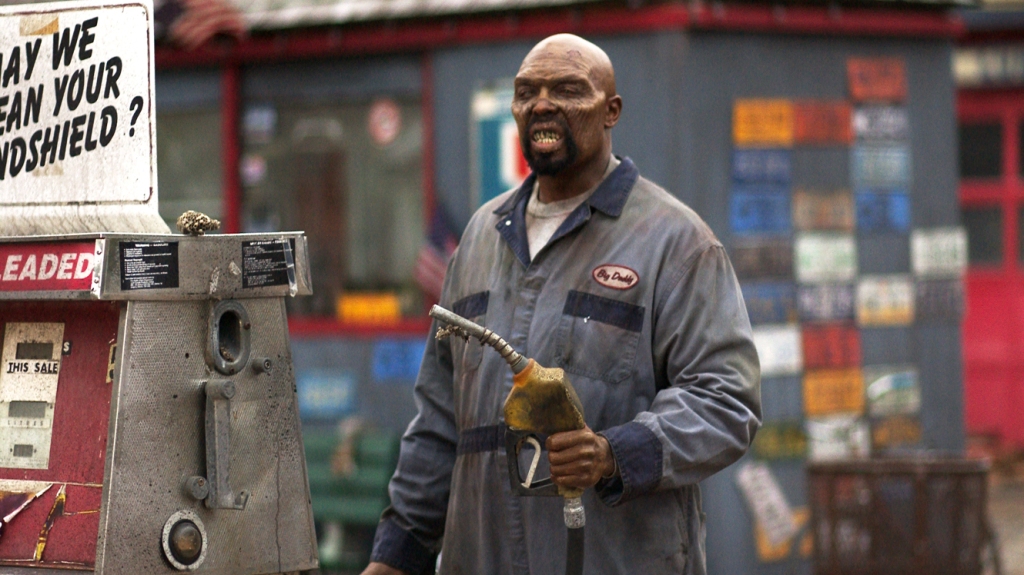When it comes to zombies, those shambling flesh eaters that infest the annals of pop culture horror, few names are as influential as George A. Romero. The man who pioneered the entire zombie genre, Romero’s legacy is a powerful testimony to just how rich with potential his ideas were, and that potential is still felt in Zack Snyder’s Army of the Dead. Snyder, who himself remade Romero’s classic Dawn of the Dead, carries on the late director’s legacy by not only exploring the same tropes Romero created, but also further elaborating on Romero’s innovations, portraying the dead less as a mindless hoard and more as a society capable of growth.
From Night to Day

The evolution of Romero’s zombies is evident in his films. Night of the Living Dead showed the ghouls at their most basic, as mindless shamblers desiring only to feed on the living. Even here, there were some hints that perhaps something more complicated was going on behind those cold dead eyes, shown when the zombies used tools to gain access to and dispatch their victims. Still, these were very basic traits that in no way hinted at higher intelligence or memories of life.

The first clue that perhaps Romero’s zombies were perhaps a bit more complicated came in 1978’s Dawn of the Dead. A prevailing theme of these ghouls was that nothing of the original person remained one they were transformed. This was proven wrong later in the film when one character is killed. The heroes, hold up in a shopping mall, use the supplies available to them in order to conceal their hiding spot from the outside world, remaining hidden from both zombies and marauders. When one of the characters is killed, he remembers where the hidden entrance is, leading the other zombies through it. This one moment hinted that there was indeed more to zombies than we knew, and opened up a flood of creative possibilities.

These ideas were explored much more thoroughly in the follow up film, Day of the Dead. In this film, a group of scientists try to find a cure for the plague, all while suffering under the tyrannical rule of a platoon of soldiers. Through their experiments they find that one of the undead, whom they nickname Bub, is sentient. Far differently than his previous films, Romero portrays Bub with compassion and empathy, making the zombie the most sympathetic character in the film. Bub knows how to use tools, enjoy music and reading, and even kills not for food, but revenge. Romero’s zombies were evolving.

The pinnacle of this evolution comes in Land of the Dead, the 4th and highly underrated entry in Romero’s series. By now the dead outnumber the living, and left to their own devices, have begun to fall back on habits they had when they were alive. The lead zombie in this film, the aptly named Big Daddy, is a gas station attendant who feels compelled to use the gas pump at his station whenever he hears the ringing of a bell. He also established something very important in the Romero series, and that was the concept of a zombie society.
While not without its faults, how Land of the Dead tackles the undead is very interesting. Here, the zombies are portrayed as organized and sentient, with Big Daddy emerging as a leader. The gas station attendant turned liberator of the undead leads an attack against a human settlement not for flesh, but to avenge the deaths of his fellow zombies, employing such tools as guns, knives and bombs. As in the previous film, this undead character is portrayed more sympathetically than most of the human characters, making him the icon of the film.
From the subtle touches in Dawn of the Dead to their conclusion in Land of the Dead, Romero transformed his own creation from a mindless flesh eater and into a creature that can organize, plan and live as a civilization. Such ideas were rarely explored outside of the Romero series, which is one of the reasons Snyder’s latest film is so interesting.
Day of the Army
Zack Snyder’s Army of the Dead is a fun heist romp in the spirit of Ocean’s Eleven or The Dirty Dozen, following a ragtag group of heroes as they try to rob a safe in zombie infested Las Vegas. The shamblers of Romero’s films can be found here, along with a newer, more evolved kind of zombie that further elaborates on the intelligence hinted at in previous movies.

There are two types of zombies in Snyder’s Army. The first are the ones we’re familiar with, and the second are the more intelligent Alpha zombies. These zombies, turned by being bitten by an Alpha, are a very organized society, with a social hierarchy and their own set of rules. Perhaps most unusually they’re shown to interact with humans civilly under certain conditions. Early in the film, the group of heroes trades one of their own to these Alpha zombies in exchange for passage, an offer that the two head Alphas, a male zombie named Zeus and his Queen, are willing to accept. This willingness to bargain and trade wasn’t seen in the Romero films, but does follow the trends established in his films.

One thing that most assuredly is taken from Romero’s films is the ability of zombies to feel affection and even love. Bub from Day of the Dead shows great distress when some of the human characters are killed, and Big Daddy from Land is shown to have a heroic streak when he runs into the line of fire to defend his fellow zombies. Likewise, Zeus and his Queen are shown to have a special bond, and when harm befalls one of them, the pain the other feels is very real. It’s this pain that powers something felt by both Bub and Big Daddy.
Here, the Alpha zombies, as with Bub and Big Daddy, are shown to get angry and seek out people not to eat but to kill for the sake of killing. Zeus in particular is shown to have a real mean streak, maliciously targeting the human characters when they defy him or worse, harm another Alpha he cares deeply for. These are not merely monsters, but emotional beings that carry the legacy of Romero’s world.

For all the similarities with Romero’s undead and how Snyder further develops them, there is one key difference that sets the two worlds apart, and that’s how the undead are portrayed. In Snyder’s film, the dead, no matter how sentient, are portrayed as objectionable and sadistic. By contrast, as Romero’s series developed, he slowly grew less sympathetic to people and more sympathetic to the undead. It is the humans rather than the zombies who are the villains in Day and Land, with the undead becoming heroes of sorts you root for.
Twilight of the Dead
Army of the Dead is a fun film with a lot of good humor and over the top gore, as well as a nice emotional core that pulls at the heartstrings when it needs to. It also represents the next chain in a creative link that Romero began back in 1968. Romero created one of the most iconic monsters in the history of cinema, and then decided to explore it in a much deeper level than most would be willing to. That sense to explore and evolve the concept is carried in in Snyder’s latest film, and that perhaps is the most interesting thing about it.
Before heading out, why not check out some of our most recent content, including how the Godzilla franchise may be smarter than you realized and our picks for the best video game film adaptions of all time.

One thought on “How ‘Army of the Dead’ Carries on Romero’s Legacy – ScreenHub Entertainment”